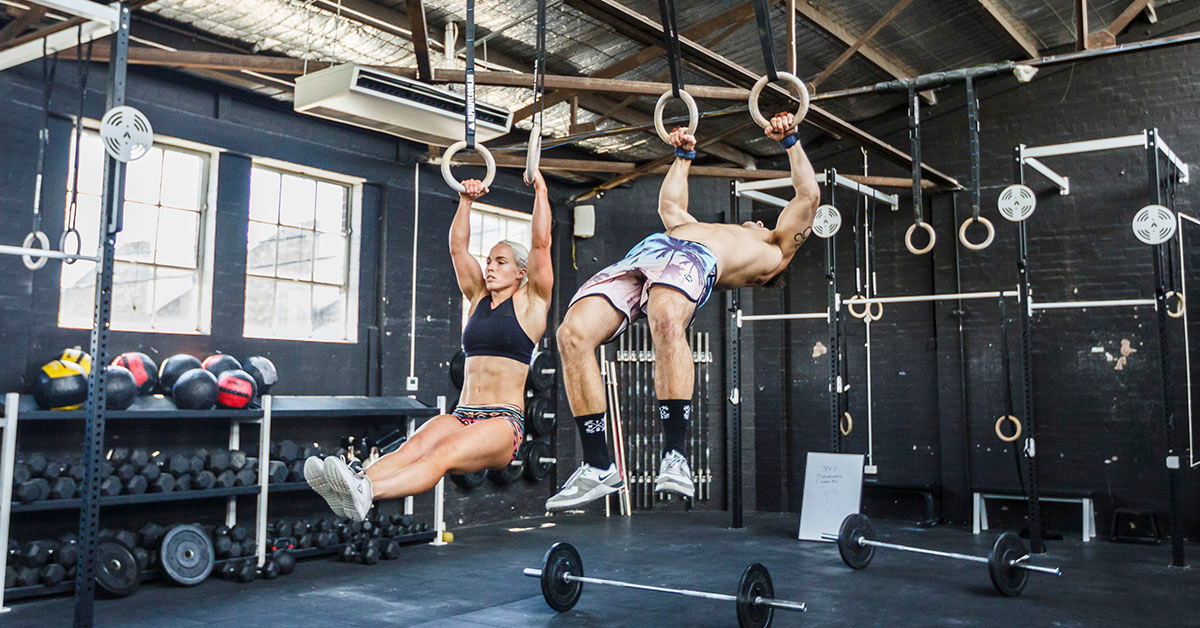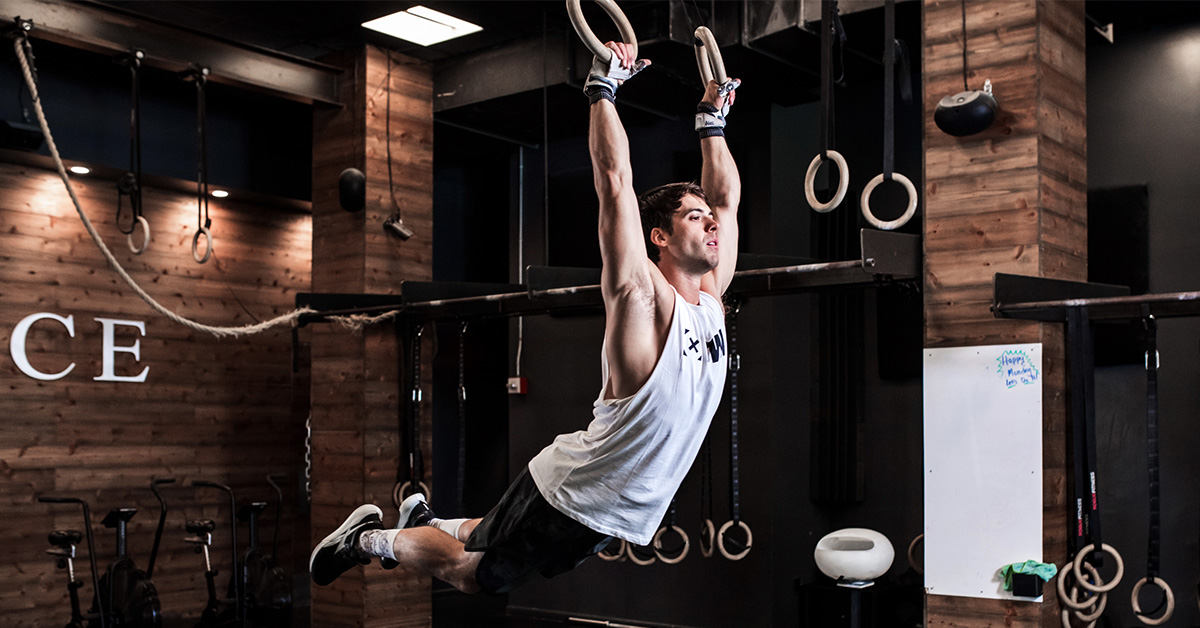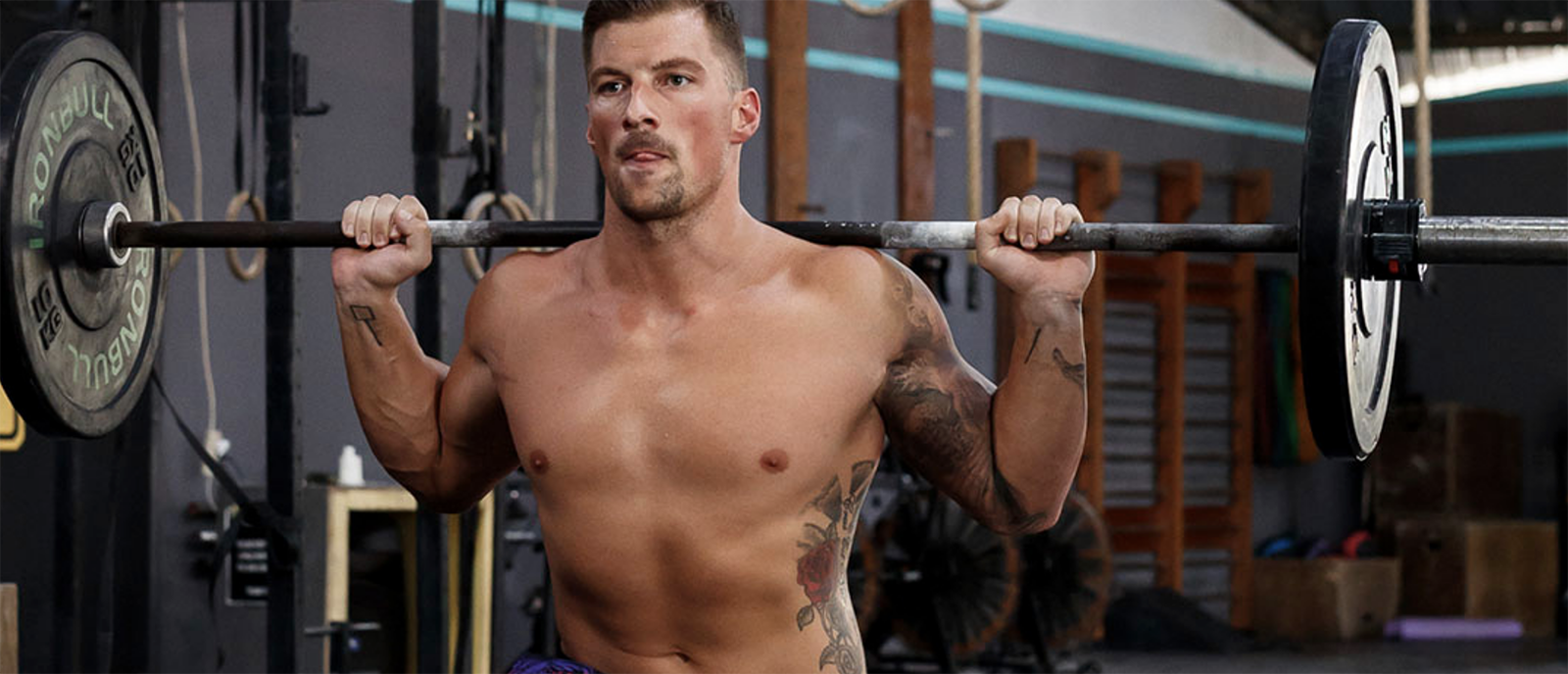Before Dave Castro introduced the handstand walk in the Open, most athletes would say that the ring muscle-up was the hardest, most technique-savvy thing in the sport — making them the most brag-worthy movement.
The reason that the exercise is so difficult, according to four-times Games athlete and fittest woman in the United States for 2018, Kari Pearce, USAW-SPC, ISSA-CPT, is that it requires a tremendous bout of strength and technique. “The ring muscle-up works a variety of muscles: your back, shoulders, abs, biceps, triceps, and core. When you do a kipping ring muscle-up, the movement is full-body. You even use your hips to generate power to get you above the rings.”
View this post on Instagram
If you want to master the ring muscle-up, Ashley Stewart, CF-L1, Versatility Fitness in Pflugerville, TX, recommends that you can complete at least five to eight reps of strict chest to bar pull-ups and five to eight strict ring dips, plus have solid core strength. “If not, I suggest they work strictly on progressions that build on strength and worry about ring muscle-up technique once they are truly strong enough to complete one safely,” said Stewart.
Below, you will find both ring muscle-up progressions that help improve strength and progressions that are focused on the skill.
The 5 Ring Muscle-Up Progressions You Really Need
1. False Grip Ring Row
Before you can do a ring muscle-up, you need to develop pulling strength from a false grip, according to Michael Martino, CF-L2, Head Coach at BRICK in NYC. “The false grip is an inherently easier position to turn over than a regular grip, especially for someone new to the movement, so it is important for an athlete to get comfortable using it.”
How to do it: Pick a pair of rings that is waist to chest height. Stand facing the rings, and grab onto the rings so that your wrist can rest in the rings and your knuckles are facing each other, palms toward your body. “I like to think of this as doing a karate chop. So you are karate chopping the ring in half,” said Pearce.
Now you are going to descend into a ring row position while keeping your wrist against the ring.
Once you are comfortable here, make the movement harder by elevating your feet onto a box or bench. “I like for athletes to get to the point where they can perform five to eight false grip ring rows with their feet elevated to develop a nice pulling strength base,” said Martino.
2. Russian Box Dips
Once you can do a ring dip, you’re ready to try box dips, which use the same muscle groups but add a transition. “The primary movers in the muscle-up are going to be the upper extremities as well as all of the muscles in the shoulder capsule, plus your lats, midline, and hips,” explained Martino. This movement uses the same muscle groups.
How to do it: Stack two boxes on either side of you so that there is a 40- to 48-inch platform on either side of your body. Rest one forearm on each box so that your fingertips are over the edge and gripping onto the box.
Put the weight into your arms and release your feet from the ground. Now, you are going to move forward without momentum to get yourself off your forearms and into the bottom of the dip position. Now perform a strict dip. That is one rep.
3. Banded Muscle-Up
Once you can do at least one strict ring dip and one strict chest-to-ring pull-up, add the banded muscle-up to your routine. “I like banded muscle-ups for those who have the strength but are looking to work on their transitions. I like it because the band will take some of the weight off so you can focus on the technique of the movement and not as much of the strength aspect,” said Pearce.
View this post on Instagram
How to do it: First, loop two thick bands together, making one large resistance band. Now set up a small box to the side of the rings so that, when you are standing on the box, you are not directly under the rings. Loop the band through one ring and hold onto the other side of the band with your hand using falsetto grip.
Step off the box so that both your feet are in the middle of the band. Adjust to the feel of the band by doing some light bounces in the band. When you’re ready, do one big jump and use the momentum to get into the muscle-up transition or the bottom of the dip.
If you have the strength, you can push up from the bottom of the dip. Just be aware that your feet may come out of the bands.
“Bands also allow for visible and tangible progression because you can vary the resistance. For instance, once a green band is too much assistance, try a red band with a blue band,” said Martino.
4. Negative Muscle-Up
“Working the movement from the top down — also known as a negative muscle-up — with a slow and controlled tempo is a phenomenal way to build strength and control,” said Martino. If you try it, just remember that the goal is quality, not quantity.
How to do it: To try one, you have to first get into the “top” portion of the ring muscle-up. Because this can be tricky with rings that are hanging from the ceiling, Martino recommends choosing rings that are at waist or armpit height. Start in a ring support with falsetto grip, with elbows tucked close to your body and arms straight, supporting your body at the top of the rings. When you are ready to begin, imagine that you are screwing your pinkies toward your pockets.
Next, perform a negative ring dip. Slowly lower yourself into a deep dip position by keeping the rings nice and close. Here is where it gets a little tricky: the transition. “Once your biceps are touching the rings, you will rotate the rings around your body — keeping the rings as close to your chest as possible — and continue to slowly lower yourself until your arms have reached full extension at the bottom,” explained Pearce.
5. Jumping Ring Muscle-Up
View this post on Instagram
Have strict dips? Try the jumping muscle-up, which will get you familiar with what the movement feels like. “They allow you to work on the turnover with some help from your legs,” said Pearce. “It also teaches someone how to properly catch themselves in the bottom of the dip after they are over the rings with their entire body weight.”
How to do it: Start by setting up a box underneath a set of rings so that, when you are standing on the box, you are directly underneath the rings. “The higher the box is, the easier the exercise will be. I suggest starting high to get the feel of it then lower the box once the movement is perfected,” said Pearce. Grab onto both rings in falsetto grip, so that your hands are facing each other. From here, you will bend your knees and slightly extend your arms. (If you’ve done a jumping bar muscle-up, it’s a similar position).
“Now, you will jump and rotate your hands around your body, making sure you keep the rings close to your body, so that you catch yourself in the bottom of a ring dip,” explained Pearce. “Once you’re there, press up and out of the ring dip to complete the muscle-up.”
From here, you can either perform a negative muscle-up or simply roll off.
Want even more help with your ring muscle-up? Check out this video from Khan Porter.

















